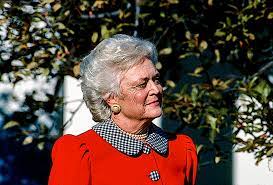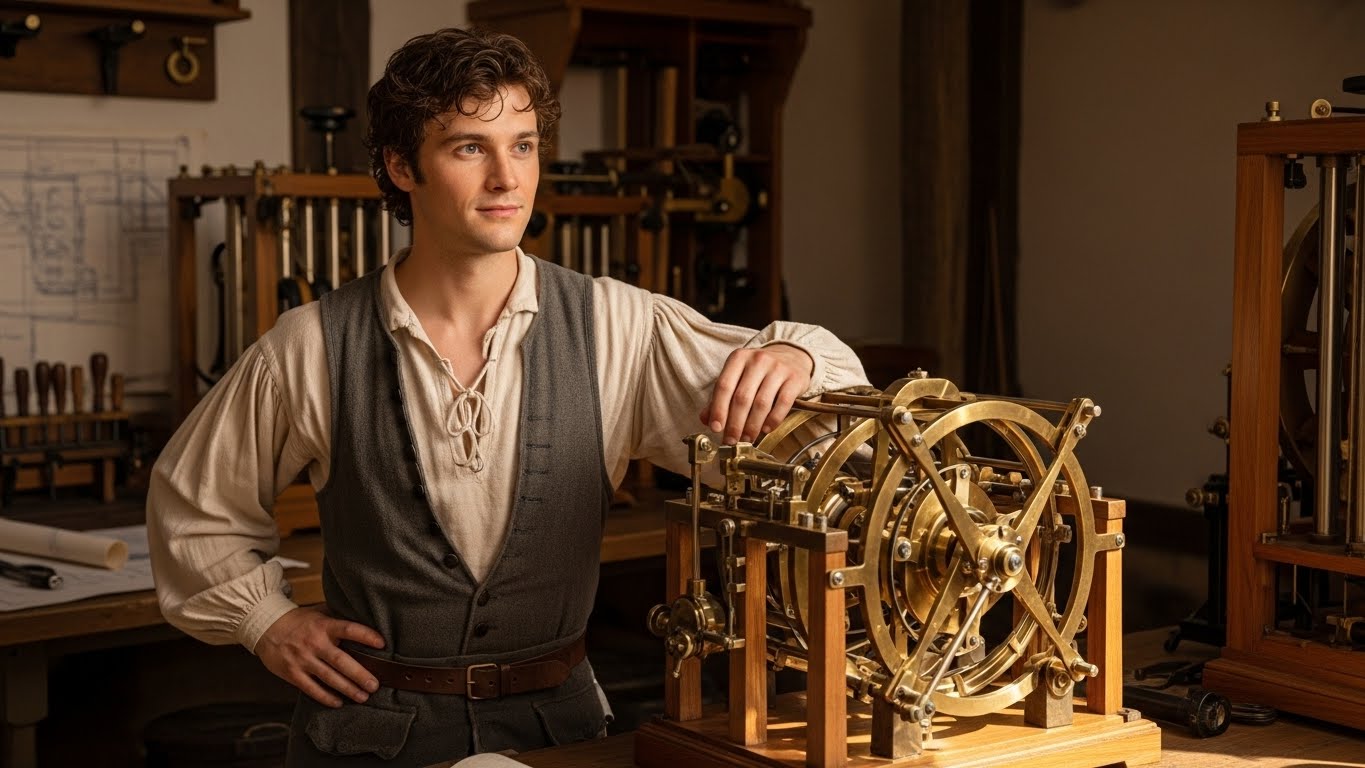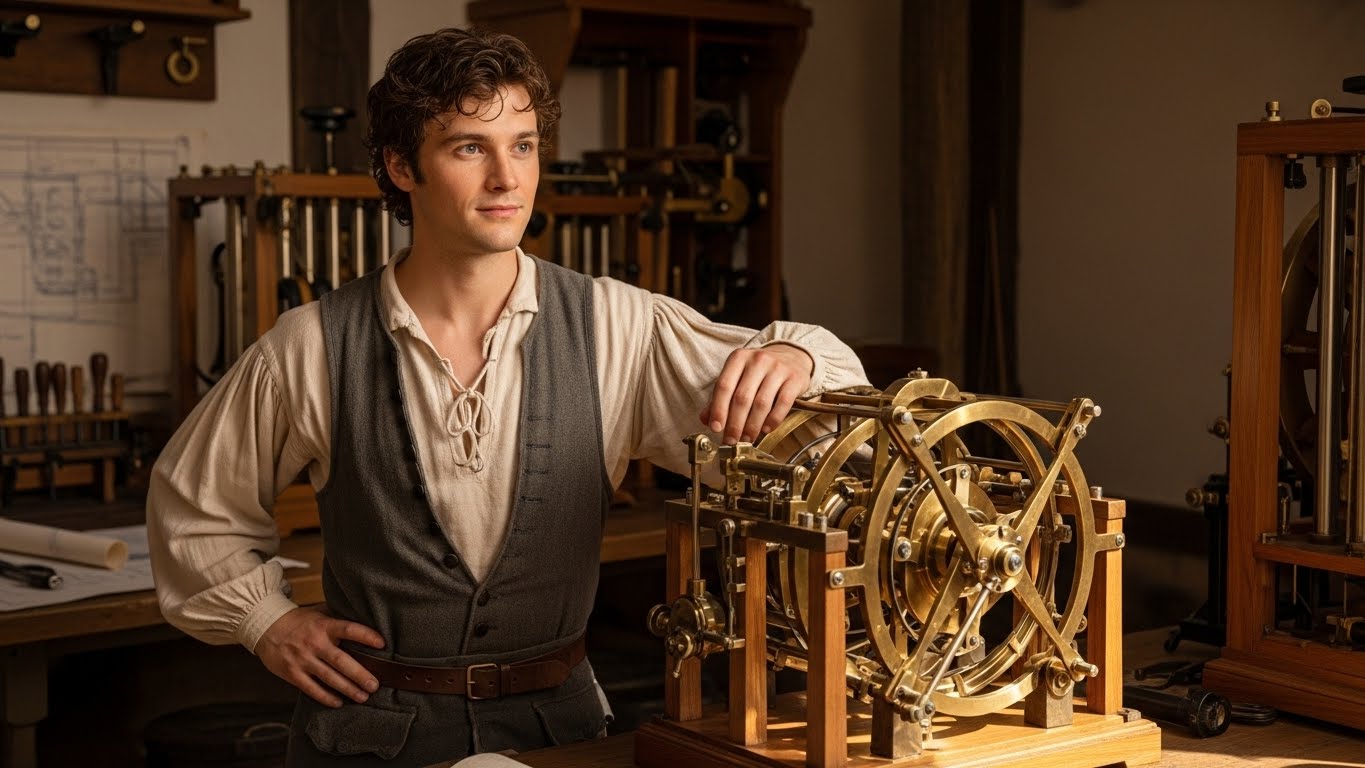Archives
Barbara Bush: A Legacy of Service, Strength, and Compassion

Barbara Bush, the former First Lady of the United States, is remembered as one of the most influential and admired women in American history. Known for her intelligence, humility, and dedication to public service, Barbara Bush became a role model for generations. Her legacy goes beyond politics, as she devoted much of her life to literacy, family values, and humanitarian causes.
Early Life of Barbara Bush
Barbara Bush was born Barbara Pierce on June 8, 1925, in New York. Raised in a middle-class family, she grew up with strong values of service and responsibility. She met George H. W. Bush, who would later become the 41st President of the United States, when she was just a teenager. Their love story, built on mutual respect and devotion, would become one of the most cherished partnerships in American politics.
From an early age, Barbara Bush displayed qualities of leadership and compassion. These traits would later define her time in the public eye and make her a beloved figure worldwide.
Barbara Bush as First Lady
When George H. W. Bush became President in 1989, Barbara Bush stepped into the role of First Lady with grace and authenticity. Unlike many of her predecessors, she often embraced simplicity, becoming known for her white hair and pearls, which she wore as a symbol of confidence and comfort rather than glamour.
During her time in the White House, Barbara Bush focused on issues close to her heart, especially literacy. She believed literacy was a foundation for success and opportunity, famously stating, “If we don’t give everyone the ability to simply read and write, we aren’t giving them a fair chance in life.”
The Barbara Bush Foundation for Family Literacy
One of her most significant contributions was the creation of the Barbara Bush Foundation for Family Literacy in 1989. This organization aimed to improve literacy across America by providing educational opportunities for parents and children alike.
Her vision was clear: improving literacy would strengthen families, reduce poverty, and create a better society. Even after her time in the White House, Barbara Bush remained deeply involved in her foundation, ensuring her mission continued for future generations.
Barbara Bush and Family Values
Barbara Bush was also known for her dedication to family. As the matriarch of the Bush family, she raised six children, including George W. Bush, who later became the 43rd President of the United States, and Jeb Bush, who served as Governor of Florida.
Her parenting style emphasized honesty, humility, and responsibility. She encouraged her children to serve others and stay grounded despite their political prominence. Her role as a supportive mother and grandmother shaped the Bush family’s legacy in American politics.
Humanitarian Work Beyond Politics
Beyond literacy, Barbara Bush was actively involved in numerous humanitarian causes. She supported initiatives related to healthcare, homelessness, and children’s welfare. Her compassion for others extended beyond partisan lines, which earned her respect from people across the political spectrum.
She believed in the power of kindness and demonstrated that leadership could be expressed through empathy and service. Her work often highlighted the importance of looking after the most vulnerable members of society.
Public Perception of Barbara Bush
Barbara Bush’s authenticity and down-to-earth personality made her one of the most popular First Ladies in modern history. Polls frequently ranked her among the most admired women in America. Unlike many political figures, she preferred speaking plainly and directly, which resonated with everyday citizens.
Her willingness to embrace her natural appearance, particularly her prematurely white hair, symbolized her refusal to bow to superficial expectations. Barbara Bush’s sense of humor, warmth, and wisdom further enhanced her appeal.
Later Years and Passing of Barbara Bush
In her later years, Barbara Bush continued to inspire through her philanthropic efforts and presence in public life. Even as her health declined, she remained committed to her family and her causes.
On April 17, 2018, Barbara Bush passed away at the age of 92. Her death was mourned across the nation and the world, as people reflected on her remarkable contributions to society. Leaders, citizens, and communities alike paid tribute to a woman who embodied dignity, strength, and compassion.
The Lasting Legacy of Barbara Bush
Barbara Bush’s influence continues to live on through the Barbara Bush Foundation for Family Literacy and the lives she touched. Her emphasis on education and family values remains a guiding principle for many.
Her legacy also lives within her family’s continued commitment to public service. As a First Lady, mother of a President, and grandmother, Barbara Bush shaped American history in a unique way.
More importantly, she proved that leadership is not defined solely by political power but also by compassion, empathy, and a lifelong commitment to others.
Conclusion
Barbara Bush was more than a First Lady—she was a symbol of strength, compassion, and service. Through her work in literacy, dedication to family, and humanitarian contributions, she left an indelible mark on history.
Her legacy serves as a reminder that true leadership comes from humility, kindness, and a commitment to improving the lives of others. Barbara Bush will always be remembered as one of America’s most beloved and respected figures.
Archives
Ninawelshlass1: How She Transformed Her Passion into a Thriving Blog

Meet Ninawelshlass1, a name that has been making waves in the blogosphere. With her unique voice and captivating content, she’s transformed her passion into a thriving online platform. But how did this journey begin? What sparked her love for blogging? As we delve deeper into Ninawelshlass1’s story, you’ll discover the inspiration behind her success and the lessons she’s learned along the way. Whether you’re an aspiring blogger or simply curious about what it takes to build a successful digital presence, there’s something here for everyone. Join us as we explore Ninawelshlass1’s incredible journey!
Early Life and Career Journey
Ninawelshlass1’s journey began in a small town, where her creativity blossomed early on. Surrounded by nature and books, she developed a love for storytelling that would shape her future.
Her career path wasn’t linear. After finishing school, Nina explored various roles—from marketing to graphic design—each experience added layers to her skill set. These diverse positions honed her ability to connect with different audiences.
Despite the twists and turns, Nina always felt the itch to create. It was during late-night brainstorming sessions that the idea of blogging sparked in her mind. She envisioned a space where she could share insights and stories drawn from both life experiences and professional endeavors.
With determination guiding her steps, Ninawelshlass1 took the plunge into the world of blogging. Each post reflected not just passion but also hard-earned wisdom from years spent navigating life’s unpredictability.
Finding Her Passion for Blogging
Ninawelshlass1 discovered her love for blogging during a quiet moment in her life. Surrounded by journals filled with thoughts and ideas, she yearned for a platform to express herself more widely.
It began as an experiment. She poured her heart into writing about everyday experiences, sharing insights that resonated with others. Each post was like a small piece of art, crafted with care.
As she hit publish on her first article, something clicked. The rush of connecting with readers ignited a fire within her. Comments flooded in, praising her authenticity and creativity.
From that point on, Ninawelshlass1 embraced the journey wholeheartedly. Blogging became not just a hobby but a means to explore and share the world around her through fresh perspectives and relatable stories. Each word drew people closer while allowing them to see parts of themselves reflected back at them.
The Growth of Ninawelshlass1
Ninawelshlass1 has witnessed remarkable growth since its inception. What began as a personal outlet quickly transformed into a vibrant community.
Her authentic voice resonates with readers, drawing them in and encouraging engagement. This connection is key to her rapid rise.
The blog’s diverse content allows it to cater to various interests, from lifestyle tips to personal anecdotes. Each post reflects her passion and dedication, making the reading experience enjoyable.
Social media played an essential role in expanding her reach. By sharing snippets of her life and insights on platforms like Instagram and Twitter, she cultivated a loyal following that eagerly anticipates new posts.
Collaborations with fellow bloggers also helped elevate Ninawelshlass1’s presence online. These partnerships introduced fresh perspectives while broadening her audience base significantly.
As traffic increased, so did opportunities for monetization through sponsored content and brand collaborations. Ninawelshlass1 proves that genuine passion can lead to impressive growth in the blogging world.
Tips for Starting a Successful Blog
Starting a blog can be an exciting journey. The first step is to choose a niche that truly sparks your interest. Focus on what you love; this passion will shine through in your writing.
Next, invest time in creating high-quality content. Always prioritize value for your readers. Whether it’s informative, entertaining, or inspiring, make sure each post resonates with your audience.
Consistency is key as well. Develop a regular posting schedule and stick to it. This helps establish trust and keeps readers coming back for more.
Don’t forget about SEO basics! Research keywords related to your topic and incorporate them naturally into your posts. This strategy boosts visibility on search engines.
Engage with your audience through comments or social media platforms. Building a community around Ninawelshlass1 fosters loyalty and encourages interaction among followers.
Overcoming Challenges as a Blogger
Every blogger faces hurdles along the way. Ninawelshlass1 certainly encountered her share. From writer’s block to fluctuating traffic, challenges were part of her journey.
One significant obstacle was self-doubt. Many times, she questioned whether her content resonated with readers. Instead of giving up, she turned this uncertainty into motivation for improvement.
Technical issues can also be daunting. Navigating website glitches and SEO changes feels overwhelming at times. However, Ninawelshlass1 embraced learning as a vital part of blogging.
Community support played a crucial role too. Connecting with fellow bloggers helped her gain perspective and encouragement during tough phases.
Through it all, persistence became key. Each challenge taught valuable lessons that shaped both the blog and its creator in unexpected ways.
Future Plans for Ninawelshlass1
Ninawelshlass1 has exciting plans on the horizon. As she continues to expand her blog, collaborations with fellow bloggers and brands are in the works. This could bring fresh content and new perspectives to her audience.
She’s also considering hosting online workshops. Sharing her expertise will allow her followers to learn directly from her experiences. These interactive sessions could foster a stronger community around Ninawelshlass1.
Moreover, exploring multimedia platforms is on the agenda. Think podcasts or video content that dives deeper into topics she loves. Engaging more senses can enhance the connection with readers.
A potential book project looms large in her mind. A compilation of insights, personal stories, and practical tips might inspire others looking to step into blogging or follow their passions too. The future looks bright for Ninawelshlass1!
Conclusion
Ninawelshlass1 has become a beacon of inspiration for aspiring bloggers everywhere. Her journey from discovering her passion to building a thriving platform shows the power of dedication and creativity. Through hard work, she turned her love for blogging into something impactful.
Her story emphasizes that anyone can embark on their own blogging adventure with the right mindset and strategies. By sharing engaging content, connecting with readers authentically, and overcoming inevitable challenges, Ninawelshlass1 illustrates what it takes to succeed in this competitive space.
The future looks bright for Ninawelshlass1 as she continues to evolve alongside her audience. With plans for growth and fresh ideas constantly emerging, it’s exciting to think about what’s next. Her experience serves as motivation—a reminder that following your passions can lead to remarkable outcomes.
Keep an eye on Ninawelshlass1; there’s no telling how far she will go or what new horizons she’ll explore next in the world of blogging.
Archives
MSB247: How It’s Revolutionizing Online Transactions

The world of online transactions is evolving faster than ever, and MSB247 is at the forefront of this revolution. Imagine a platform that streamlines payments, enhances security, and improves user experience—all while being incredibly easy to use. That’s exactly what MSB247 offers businesses navigating the complex landscape of digital finance.
As e-commerce continues to grow exponentially, finding reliable and efficient payment solutions has never been more crucial. With so many options available, it can be overwhelming for businesses to choose the right one. Enter MSB247—a game-changer that’s transforming how companies conduct their online transactions.
Curious about what makes MSB247 stand out from the crowd? Let’s dive deeper into its features and benefits that are reshaping business operations around the globe.
Understanding MSB247
MSB247 is a cutting-edge payment processing platform designed to simplify online transactions. Tailored for businesses of all sizes, it offers an intuitive user interface that makes managing payments effortless.
At its core, MSB247 harnesses advanced technology to facilitate smooth and secure financial exchanges. This empowers businesses to accept multiple forms of payment, including credit cards and cryptocurrencies.
One notable feature is its real-time transaction tracking. Users can monitor their sales as they happen, providing transparency and peace of mind.
The platform also emphasizes adaptability. Whether you run a small startup or a large enterprise, MSB247 scales with your needs seamlessly.
Moreover, customer support is readily available 24/7—ensuring help is just a call away whenever issues arise. All these elements combine to create a robust solution that stands out in the crowded digital marketplace.
The Benefits of MSB247 for Businesses
MSB247 offers a range of advantages tailored for businesses looking to enhance their online transaction processes. One key benefit is the seamless integration it provides with existing systems, allowing companies to transition smoothly without disrupting operations.
Cost-effectiveness stands out as another major plus. By streamlining transaction fees and reducing overhead costs, MSB247 enables businesses to allocate resources more efficiently. This can lead to increased profit margins over time.
Additionally, its user-friendly interface makes it accessible for teams of all skill levels. Employees can navigate the platform effortlessly, leading to better productivity and fewer training hours needed.
The scalability of MSB247 also deserves attention. As businesses grow or pivot in response to market demands, this platform adapts quickly, ensuring that organizations remain agile in an ever-changing landscape.
How MSB247 is Changing the Game for Online Transactions
MSB247 is redefining how online transactions are conducted. With its seamless interface, businesses can process payments swiftly and efficiently. This ease of use encourages more customers to complete their purchases.
Real-time processing is another game-changer. Transactions happen almost instantly, reducing waiting times for both businesses and consumers alike. Quick access to funds enhances cash flow, allowing companies to reinvest or manage expenses without delay.
The integration capabilities of MSB247 also set it apart from traditional payment systems. It connects effortlessly with e-commerce platforms and accounting software, streamlining operations further.
Moreover, MSB247’s adaptability caters to various industries, making it a versatile choice for any business model. From retail stores to service providers, the platform meets diverse needs effectively.
By simplifying complexities often associated with online transactions, MSB247 empowers smaller enterprises to compete on a larger scale in the digital marketplace.
Case Studies: Companies Using MSB247 and Their Success Stories
Numerous companies have embraced MSB247, reaping tangible rewards. One notable example is a mid-sized e-commerce platform that integrated the service to streamline payment processing. Within months, they reported a 30% decrease in cart abandonment rates.
Another success story comes from a tech startup specializing in subscription services. By switching to MSB247, their transaction times halved, leading to improved customer satisfaction and retention. The seamless user experience attracted new clients and boosted revenue.
A local retailer also found success with MSB247 by implementing its features for cross-border transactions. This allowed them to tap into international markets effortlessly. Their sales surged as customers from different countries could easily make purchases without complications.
These case studies illustrate how versatile and impactful MSB247 can be across various industries, driving growth while enhancing operational efficiency.
Security Features of MSB247
MSB247 places a high priority on security, employing multiple layers to protect transactions. One standout feature is its end-to-end encryption. This ensures that sensitive information remains confidential during the transaction process.
Additionally, MSB247 utilizes two-factor authentication (2FA). This adds an extra hurdle for unauthorized users trying to access accounts or initiate transactions. Users must verify their identity through a secondary method, enhancing overall account safety.
Real-time monitoring is another critical aspect of MSB247’s security framework. Transactions are continuously analyzed for suspicious activities. Any anomalies trigger alerts, enabling swift action to mitigate potential risks.
Compliance with industry standards and regulations further solidifies trust in the platform. By adhering to best practices in online security, MSB247 gives businesses and their customers peace of mind as they navigate digital financial landscapes.
Potential Disadvantages of Using MSB247
While MSB247 offers numerous advantages, it’s important to consider potential drawbacks. One notable concern is the reliance on technology. If there are system outages or technical glitches, transactions could face significant delays.
Additionally, businesses may encounter challenges with integration. Existing systems might not seamlessly align with MSB247’s platform. This can lead to added costs and extended implementation timelines.
There’s also the issue of transaction fees. While competitive, these costs can accumulate for high-volume businesses.
User experience varies as well; some customers may find adapting to new payment methods frustrating if they’re accustomed to traditional processes.
Regulatory compliance remains a critical factor in every online transaction solution. Businesses must ensure that their use of MSB247 meets all legal requirements in their respective regions, which can be daunting without proper guidance.
Future Predictions for MSB247 in the Online Transaction Industry
The future of MSB247 looks promising, especially as e-commerce continues to expand. Companies are increasingly seeking efficient ways to handle online transactions, and MSB247 is poised to meet that demand.
With advancements in technology, we can expect enhanced features and capabilities. Integration with AI could streamline processes even further, reducing transaction times significantly.
As more businesses adopt digital payment solutions, MSB247 may also expand its reach globally. This would open doors for smaller enterprises in emerging markets.
Moreover, user experience will likely take center stage. Businesses will desire intuitive interfaces that simplify their operations while providing customers with seamless experiences.
Regulatory changes may shape the landscape too. Compliance with evolving financial regulations can create both challenges and opportunities for MSB247 as it adapts to new standards in various regions.
How to Get Started with MSB247
Getting started with MSB247 is a straightforward process. First, visit the official website and create an account. You’ll need to provide basic information about your business.
Once registered, familiarize yourself with the platform’s features. Take advantage of user guides and tutorials available on their site. These resources can help you navigate through various tools efficiently.
Next, integrate MSB247 into your existing payment systems. This may involve some technical setup, but support teams are usually readily available to assist.
After integration, conduct test transactions to ensure everything functions smoothly. Monitor these transactions closely in the initial phase for any discrepancies or issues.
Stay updated with MSB247’s latest developments and enhancements by subscribing to newsletters or joining community forums. Engaging with other users can also provide valuable insights into maximizing this powerful tool for your business operations.
Conclusion
MSB247 is clearly making waves in the online transaction landscape. Its innovative approach empowers businesses by streamlining payment processes and enhancing customer experiences. The benefits are numerous, from improved efficiency to tailored solutions that cater to specific industry needs.
Companies embracing MSB247 have reported impressive success stories, showcasing how this platform has transformed their operations. Security features ensure peace of mind for both business owners and customers, while potential drawbacks remain manageable with proper understanding and strategy.
As we look ahead, it’s evident that MSB247 holds great promise for the future of online transactions. Businesses seeking to thrive in an increasingly digital marketplace would benefit from exploring what MSB247 offers.
Getting started is straightforward too. With a user-friendly interface and support available, integrating this system could be a game-changer for many organizations looking to enhance their transactional capabilities. Embracing innovation like MSB247 could very well define the next chapter in e-commerce evolution.
Archives
Wachappe: A Guide to the Trending Communication App

Wachappe is taking the communication world by storm, and it’s not hard to see why. As more people seek seamless ways to connect with friends, family, and colleagues, this innovative app has emerged as a favorite choice. With its user-friendly interface and impressive features, Wachappe promises an experience that keeps you engaged while ensuring your conversations are secure.
Whether you’re looking for group chats or simple one-on-one messaging, Wachappe has something for everyone. But what makes it stand out in a sea of other communication apps? Let’s dive into all that this exciting platform offers and explore how you can make the most of your time on Wachappe. Whether you’re already using it or just curious about what it brings to the table, there’s plenty to uncover!
The Features and Functions of Wachappe
Wachappe offers a sleek interface designed for seamless communication. Users can send texts, voice notes, and even video messages with just a few taps.
One standout feature is the ability to create group chats effortlessly. This makes it easy to coordinate plans or share updates among friends or colleagues.
Another exciting function is its multimedia sharing capability. Share photos, GIFs, and documents without hassle. The app supports various file formats, ensuring versatility in your conversations.
Additionally, Wachappe includes customizable themes and chat backgrounds that allow users to personalize their experience further. Notifications are tailored too; you can choose which chats deserve your immediate attention.
Voice calls are crystal clear due to advanced VOIP technology integrated within the app. You can connect with anyone around the globe without worrying about call quality or connection issues.
Emojis and stickers add a fun touch, making conversations lively while expressing emotions more vividly than text alone allows!
How Wachappe is Different from Other Communication Apps
Wachappe stands out in the crowded landscape of communication apps thanks to its unique blend of features tailored for modern users. Unlike many platforms, it prioritizes user experience with a sleek interface that ensures seamless navigation.
One key distinction lies in its multimedia capabilities. Users can send high-quality images and videos without compromising on resolution or speed. This is particularly appealing for those who value visual storytelling.
Additionally, Wachappe integrates advanced AI technology to enhance conversations. Smart suggestions help users craft responses quickly, making chats more engaging and dynamic.
Unlike typical messaging apps, Wachappe emphasizes community-building through group features designed for collaboration and event planning. This fosters deeper connections among friends and colleagues alike.
The app’s customizable settings allow users to tailor notifications and privacy levels according to personal preferences—something not commonly found in other communication tools.
Privacy and Security Measures of Wachappe
Wachappe takes user privacy seriously. End-to-end encryption is a cornerstone of its security model. This means that your messages are only readable by the intended recipients.
Additionally, Wachappe offers self-destructing messages. Users can set timers for their chats, ensuring sensitive information doesn’t linger longer than necessary.
Two-factor authentication adds another layer of protection to your account. It requires not just a password but also an additional verification step, making unauthorized access more difficult.
Data collection practices are transparent and limited. Users have control over what information they share and how it’s used within the app.
Regular updates help patch vulnerabilities and improve overall security features. The development team actively monitors threats to ensure user safety remains paramount in an ever-evolving digital landscape.
How to Get Started with Wachappe
Getting started with Wachappe is a breeze. First, download the app from your device’s app store. Whether you’re on iOS or Android, it’s available for both platforms.
Once installed, open the app and create an account using your phone number. You’ll receive a verification code via SMS to confirm your identity.
After that, personalize your profile. Upload a fun picture and set up your display name so friends can easily recognize you.
Explore the interface to familiarize yourself with its features like chat groups and voice messages. Don’t forget to adjust notification settings according to your preferences.
Invite friends by sharing unique links or through direct contact syncing within the app itself. The more connections you have, the richer your experience will be!
Tips and Tricks for Using Wachappe Effectively
To make the most of Wachappe, start by customizing your notifications. Tailor them to minimize distractions while ensuring you don’t miss important messages.
Utilize group chats for efficient communication. This feature allows you to connect with multiple friends or colleagues at once, streamlining conversations and reducing clutter.
Take advantage of media sharing capabilities. Send photos, videos, and documents seamlessly during your chats. It enhances engagement and keeps discussions lively.
Explore the voice message option when time is tight. Instead of typing long responses, record a quick audio note that conveys your thoughts clearly.
Consider using stickers and emojis to add personality to your messages. They can lighten the mood and help express emotions more vividly than plain text alone.
Future of Wachappe: Updates and Improvements
Wachappe is on an exciting trajectory. The developers are continuously listening to user feedback, aiming for constant enhancements.
Upcoming updates promise improved interface designs that prioritize user-friendliness. A sleek look will make navigation even simpler.
Additionally, new features are on the horizon. Enhanced group chat functionalities and customizable notifications could transform how users interact with each other. Imagine joining a video call seamlessly within your chats!
Another area of focus is artificial intelligence integration. Smart suggestions might help streamline conversations and suggest relevant content or responses.
Furthermore, Wachappe aims to expand its global reach by supporting more languages and regional features, making it accessible to an even broader audience.
As technology evolves, so does Wachappe’s potential for innovative communication solutions tailored to meet diverse needs in real time.
Conclusion
Wachappe is rapidly becoming a favorite among communication apps, blending user-friendly features with robust privacy measures. From its innovative functions to its strong emphasis on security, it stands out in a crowded market. Users appreciate the seamless experience and engaging interface that make staying connected enjoyable.
As you explore Wachappe’s capabilities, you’ll discover new ways to enhance your conversations and interactions. The platform continues to evolve, promising even more exciting updates in the future. Whether you’re using it for personal chats or professional networking, Wachappe offers something for everyone.
With tips and tricks at your disposal, you can maximize your usage and get the most from this dynamic app. Embrace the change and join countless others who are making the switch to Wachappe as their go-to communication tool. Exciting times lie ahead!
-

 Cast7 months ago
Cast7 months agoRico Rodriguez
-

 Episode Guide7 months ago
Episode Guide7 months agoHalloween episodes
-

 Cast7 months ago
Cast7 months agoCast
-

 Guest Star7 months ago
Guest Star7 months agoValentine’s Day episodes
-

 Cast7 months ago
Cast7 months agoWho is your favourite character?
-

 Cast7 months ago
Cast7 months agoSarah Hyland
-

 Guest Star7 months ago
Guest Star7 months agoGuest Star: Khamani Griffin
-

 Episode Guide7 months ago
Episode Guide7 months agoEpisode Guide : Season 1
